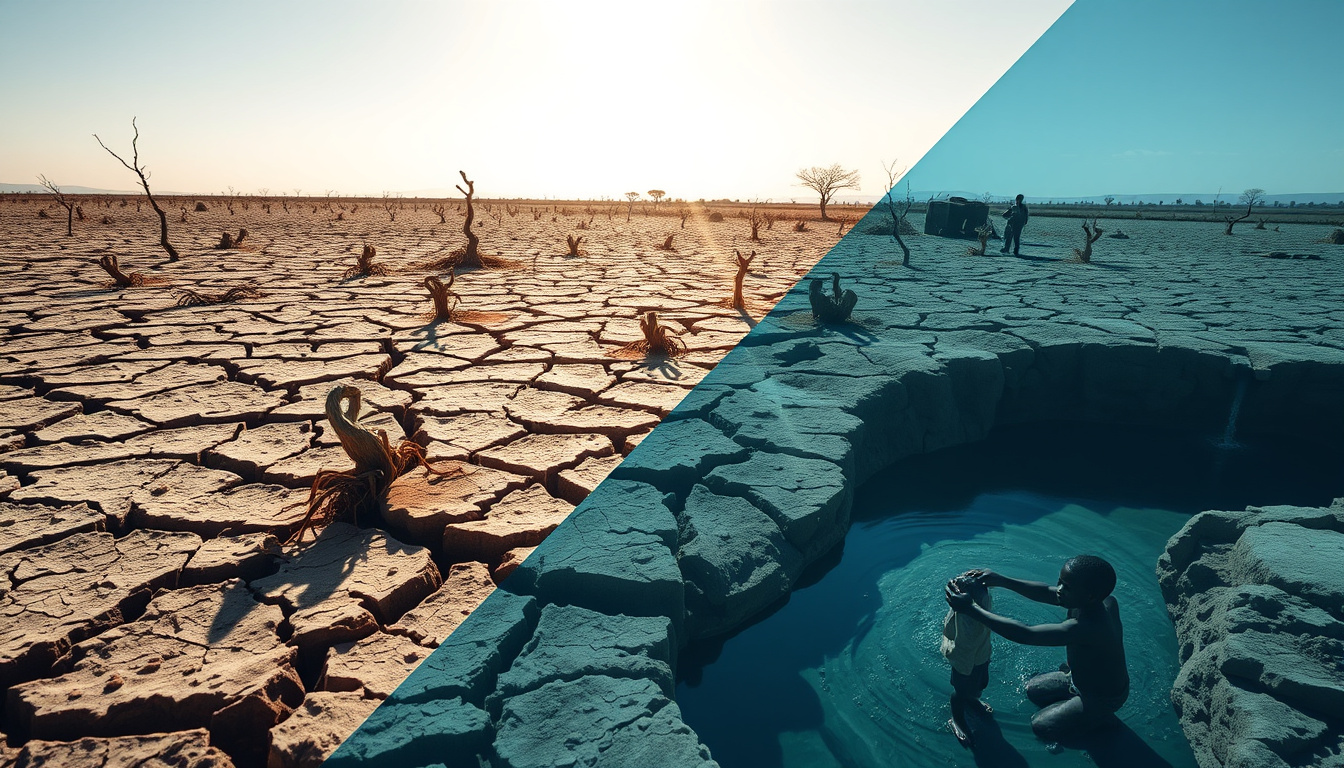
Droughts press on the world. Rainfall drops. Communities lose water. Nature loses water. Water loss hits people and nature hard. It cuts links between water and life.
What Is Water Access Reduction?
Water access reduction means less water for drinking, farming, work, and nature. Rivers shrink. Lakes fade. Reservoirs fall. Groundwater sinks as water is used too fast. Communities face fewer water drops. Nature loses the water it needs.
Impact on Communities
Health and Sanitation Challenges
People need water for clean routines. When water falls short, people miss clean drinking water. Illness spreads. Rural and poor people feel the strain.
Agricultural Productivity and Food Security
Farmers work with water in farms. Water loss stops healthy crops. Animals get less water. Food becomes scarce. Prices rise. Jobs drop as farms suffer.
Economic Consequences
Factories and plants need water to build and make goods. Water shortage slows work. Factories pause. Shops and teams lose work. Money drops in communities.
Social and Psychological Effects
People fight over scarce water. Groups stress over small water amounts. Dry times cut ties and cause worry. Every day becomes heavy with fear.
Impact on Ecosystems
Habitat Degradation
Streams and wetlands shrink. Fish and birds lose safe nests. Life falls apart when water drops. Each drop matters for life.
Altered Ecosystem Functions
Water helps soil and plants. Less water heaps soil dust and hurts plants. Roots lose the chance to grow. Each plant and animal feels loss.
Increased Vulnerability to Climate Change
Dry lands hurt in tough weather. When water is scarce, heat and wind hurt more. Nature stumbles under heavy airs and rising heat.
Strategies to Address Water Access Reduction
Sustainable Water Management
New steps cut waste. Groups try saving water at home. Rain from the sky gets stored. These steps hold water for hard days.
Infrastructure Investment
We build and fix dams, canals, and pumps. Systems work to hold water close. Buildings help fill the water gap when dry times come.
Policy and Governance
Rules share water fairly. Plans prepare towns for dry spells. Laws help groups get a fair drop when water is low.
Community Engagement and Education
People learn to save water. Local groups share smart work methods. Towns join to care for their water drops. Each hand helps to hold water life.
Conclusion
Water loss during droughts brings hard cuts to life. People suffer. Nature suffers. Ties between life and water break. When water falls short, both people and nature feel the pain. With fresh steps, new rules, and team work, each town can keep a fair share of water. This work binds people and nature with drops that power life.




